- Advanced technology, evolving care models, and partnerships shape the future of oral health
 In Pakistan, growing economy and a rising awareness of oral health, present a fertile ground for the continued and evolving role of multinational dental companies. As the country moves towards greater economic development, coupled with significant shifts in dental technology, healthcare delivery models, and consumer preferences, the scene for these global players is ready with both transformative trends and promising opportunities.
In Pakistan, growing economy and a rising awareness of oral health, present a fertile ground for the continued and evolving role of multinational dental companies. As the country moves towards greater economic development, coupled with significant shifts in dental technology, healthcare delivery models, and consumer preferences, the scene for these global players is ready with both transformative trends and promising opportunities.
One of the most significant forces shaping the future is the rapid advancement in dental technology. We are witnessing a paradigm shift from traditional methods to digitally-driven solutions. Computer-aided design and manufacturing (CAD/CAM) system is becoming increasingly accessible, enabling faster and more precise fabrication of dental restorations which may include inlays, crowns, bridges etc. 3D printing has revolutionised the creation of surgical guides, aligners for crooked teeth, and even temporary crowns. Teledentistry is not yet common in Pakistan but it is transforming dental care globally by using digital communication tools to overcome distance limitations. This technology enables remote consultations, diagnostics, and patient monitoring, making dental services more accessible.
For multinational companies, this presents an opportunity to introduce advanced technologies, establish training centers for local professionals, and potentially partner with Pakistani universities and research institutions for collaborative development and adoption of these innovations. Investing in digital infrastructure and offering Teledentistry solutions can significantly enhance their reach, particularly in underserved areas, and cater to a technologically proficient younger demographic.
The landscape of healthcare delivery is also undergoing a transformation. There is a growing emphasis on preventive care and early intervention, driven by increasing awareness of the systemic links between oral and general health. Integrated healthcare models, where dentists collaborate with other health specialists, are gaining popularity. Multinational companies can capitalise on this trend by developing and promoting preventive products and educational campaigns.
They can also forge partnerships with hospitals and clinics to offer comprehensive healthcare packages that include dental services. Moreover, the rise of specialized dental clinics and corporate dental chains presents opportunities for multinational companies to establish their own branded clinics or collaborate with existing networks, ensuring quality control and standardized care.
The increasing focus on patient comfort and convenience also necessitates investments in modern clinic designs, efficient appointment systems, and minimally invasive treatment options, areas where multinational expertise can be invaluable.
Consumer preferences in this country are also evolving. A growing middle class with increasing disposable income is becoming more conscious of aesthetics and seeking advanced cosmetic dental procedures. The demand for teeth whitening, veneers, and clear aligners is on the rise. Access to information through the internet and social media is allowing consumers to search treatment options and seek out quality care. Dental companies, with their established brand reputation and access to global marketing strategies, can effectively cater to these evolving demands. They can leverage digital marketing to educate consumers about the benefits of advanced dental treatments and build trust in their products and services. Moreover, tailoring product offerings to suit the specific needs and price sensitivities of the Pakistani market will be crucial for broader adoption. This might involve developing more affordable yet effective versions of their premium products or offering flexible payment options.
Considering these trends, several potential opportunities for further growth and collaboration emerge for multinational dental companies in Pakistan:
Establishing local manufacturing units: Investing in local manufacturing can reduce costs, create employment, and align with government initiatives promoting local production. This can also facilitate the development of local expertise and supply chains.
Developing educational and training programmes: Collaborating with dental schools and professional associations to offer training on new technologies and treatment protocols can enhance the skills of local dentists and create a demand for their advanced products.
Forming strategic partnerships: Collaborating with local distributors, dental association, dental clinics, and hospitals can provide access to established networks and facilitate market penetration, especially in Tier-II and Tier-III cities.
Investing in research and development: Partnering with Pakistani research institutions to conduct studies on oral health issues prevalent in the local population can lead to the development of tailored solutions and products.
Promoting oral health awareness campaigns: Engaging in public awareness campaigns about the importance of oral hygiene and regular dental check-ups can expand the overall dental market and create a larger customer base.
Leveraging digital platforms: Investing in Teledentistry platforms and digital marketing strategies can enhance reach, improve patient engagement, and provide convenient access to information and services.
Offering affordable and accessible solutions: Developing product lines and service models that cater to a wider range of income levels will maximise market penetration and contributing to improved oral health outcomes across the population.
The writer is a Dean Faculty of Dentistry, Baqai Medical University, Karachi



